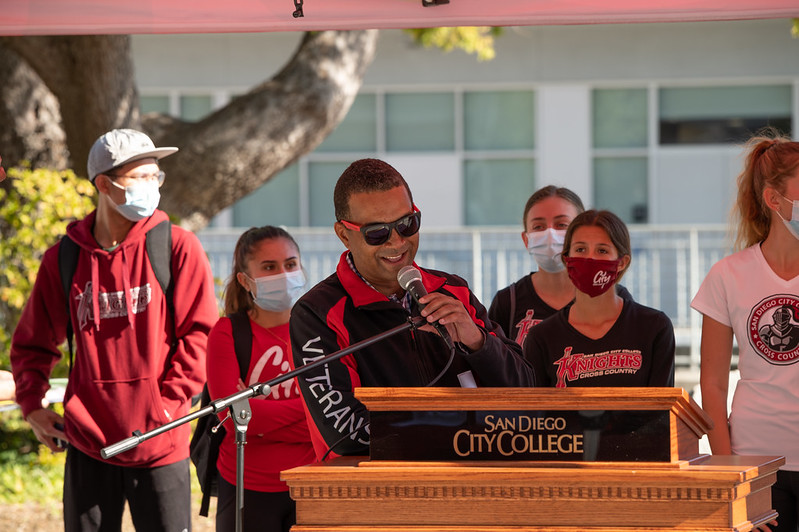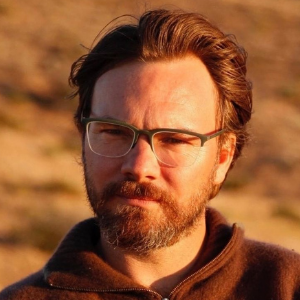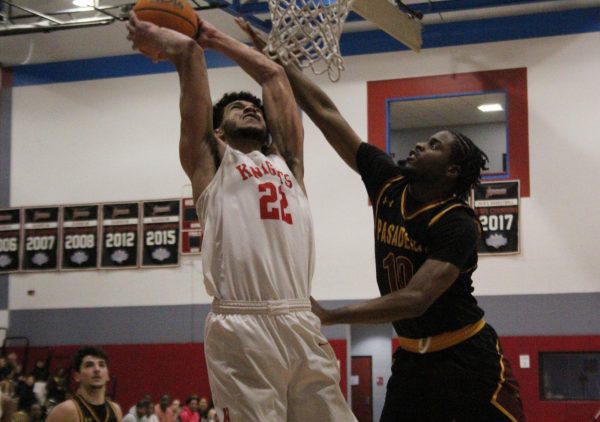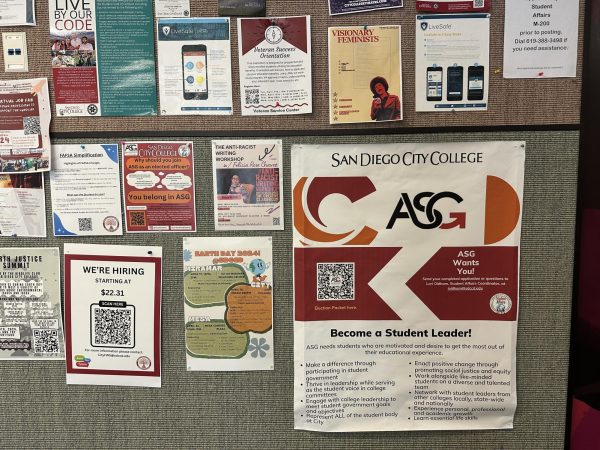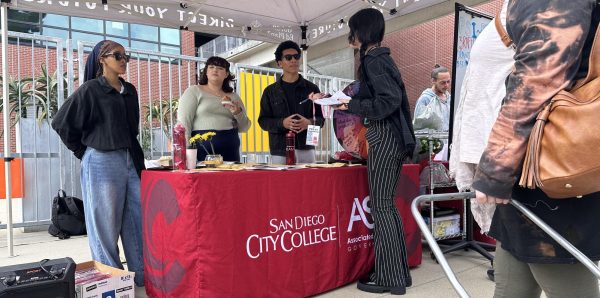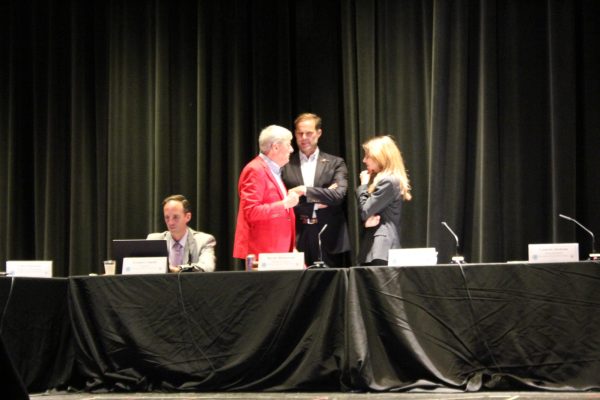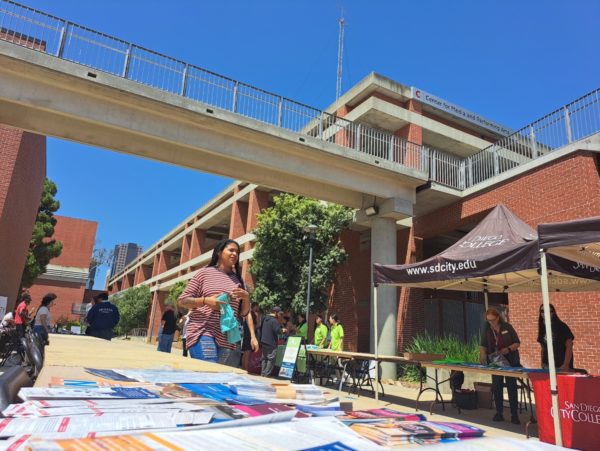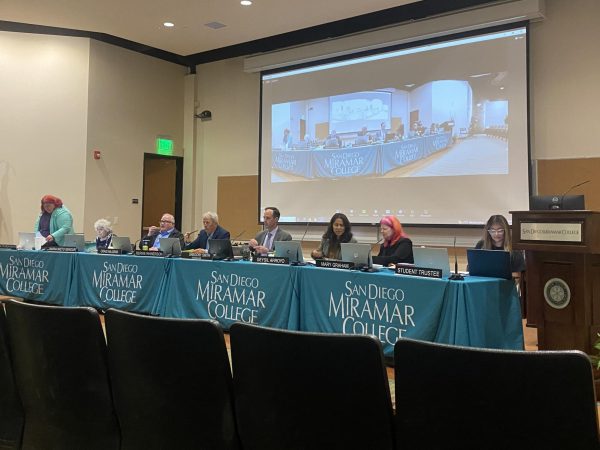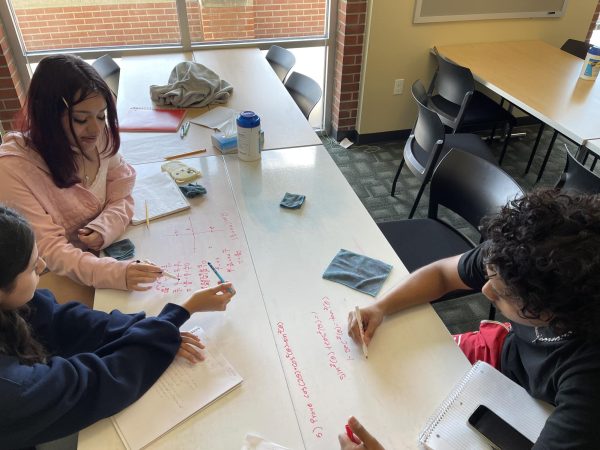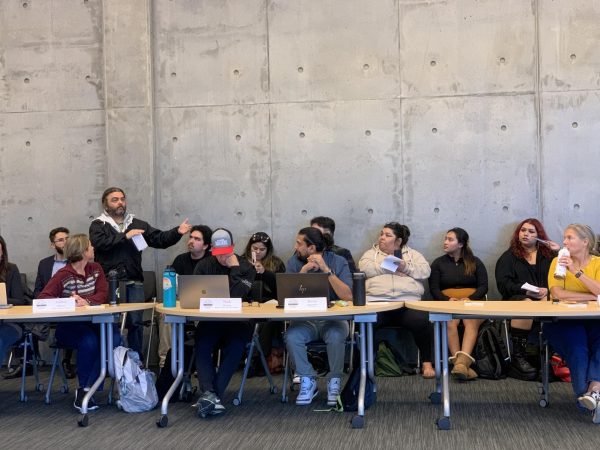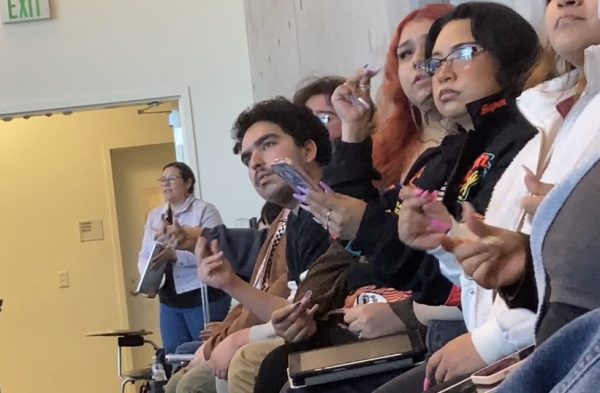Low enrollment numbers split focus of City College administration
February College Council meeting marks a shift toward preparing to operate during the endemic phase of COVID-19
President Ricky Shabazz announces plans for a return to in-person instruction during Fall Fest and Study Jam 2021 held on Dec. 8. The omicron surge, which struck days after, delayed spring semester re-opening plans. San Diego City College on Flickr photo
February 17, 2022
During the last two years, San Diego City College President Ricky Shabazz focused primarily on keeping up with the ever-changing realities and hurdles caused by COVID-19, deemphasizing enrollment statistics and directing resources toward student health and safety.
At the Feb. 16 College Council meeting, the agenda was split between two visions for the future: curriculum expansion in the form of Bachelor’s programs at community colleges and a turn of attention toward a growing part-time student population.
Vice President of Instruction Tillie Chavez presented numbers that suggested City may miss its enrollment goals by roughly 20% in the 2021-2022 school year, a number that mirrors other colleges in the district.
“We’re hanging in there the best we can,” Chavez said. “If anyone looked at it from last week to this week, there was a little bit of a decline in our headcount.”
She attributed this partly to the ongoing intervention by “fraud rings” that are affecting enrollment numbers.
Earlier this semester, City Times reported that certain class rosters have been filling up rapidly with fake students, often referred to as “bots.”
This has been reported to be a state-wide ploy to harvest student aid money and has prevented real students from enrolling in classes.
According to Shabazz, the state of California has provided City with nearly $400,000 to reach out to students who may have stopped pursuing their education, as well as to invest in retention efforts.
A trend that has appeared is a sharp rise in students who are taking 6 units or less, Shabazz said.
This growing population of part-time students brings into question whether City is prepared to structure faculty work hours and other student-related resources accordingly.
While Shabazz is expanding the San Diego Promise program, which concentrates on providing student aid for incoming high school graduates who enroll full-time, he suggested that attention must be directed to addressing the growing demographic of those who are not able to do so.
“We really have to ask ourselves, is our college, are our programs, are our services set up to serve part-time students?” Shabazz said.
His answer: maybe.
Further discussion revolved around how to balance online and in-person classes and services, respecting both the labor realities of faculty as well as student needs.
A list of faculty hiring priorities was also released, including a number of STEM faculty as well as the promised Native American Studies position.
Shabazz also introduced María-José Zeledon-Pérez in her official capacity as interim president of the academic senate.


